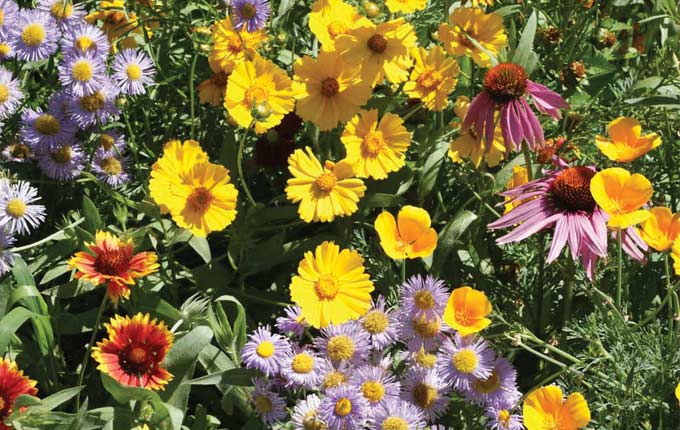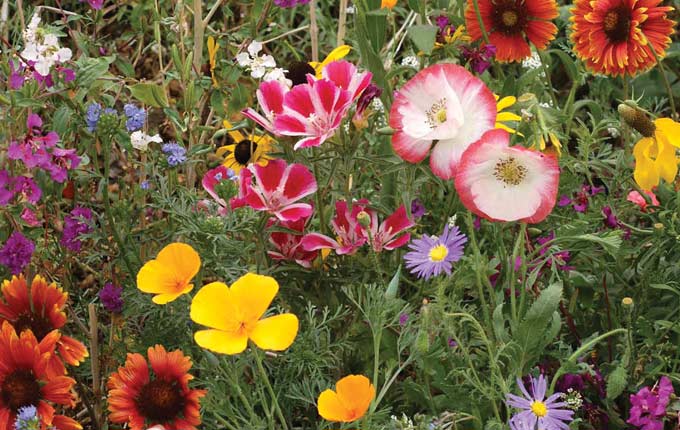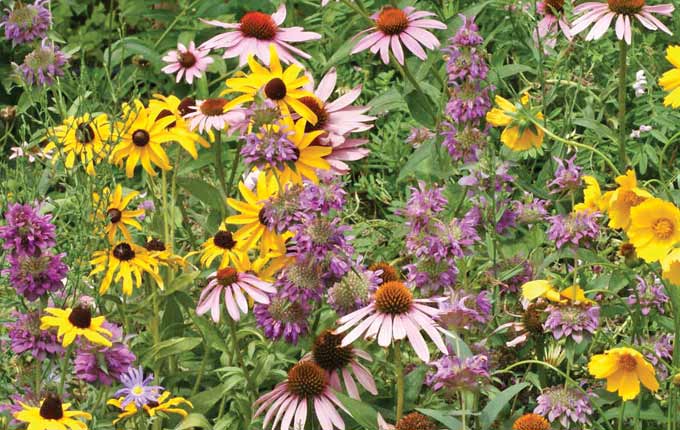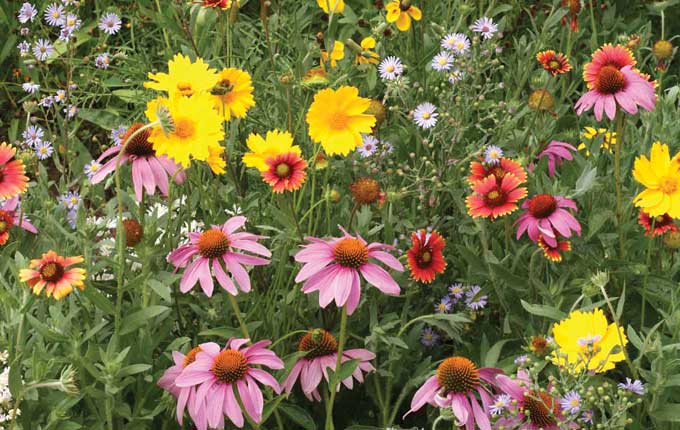Why get involved with Operation Pollinator?
Golf courses involved with Operation Pollinator can extend their environmental stewardship
to make a positive impact on communities and the environment. The vast landscapes
of golf courses around the country are the ideal location for establishing habitats
to help prevent further pollinator decline.
"Initiatives like the Audubon Cooperative Sanctuary Program, Wildlife Links Program,
Operation Pollinator and the Golf and the Environment Initiative
have all demonstrated that golf courses can provide a quality golfing experience
while also serving as urban wildlife conservation areas.
Not only do such programs benefit wildlife but they can also help to decrease golf
course expenditures by reducing the acreage of managed turf and lowering the amount
spent on irrigation, mowing, and chemical inputs. One notable project is Operation
Pollinator, an international biodiversity project started by Syngenta
in 2010.
Operation Pollinator plots are placed in out of play areas on courses and superintendents
can determine the habitat size that fits their needs. Syngenta provides participants
with signage to mark conservation areas as well as educational materials to educate
golfers and stakeholders about the project. One study found that Operation Pollinator
plots attracted 51 unique bee species and identified wildflower species that were
the most successful at attracting pollinators for their climatic area…"
How to Establish a Successful Habitat
Syngenta will provide expertise to establish new Operation Pollinator habitats including
guidelines for:
- Site selection
- Sourcing a custom wildflower seed mixture
- Establishment techniques
- Management options
To begin a new Operation Pollinator habitat, the following steps will help you establish
a plot flourishing with pollinators.
- Selecting a Site: First, select the area(s)
to establish habitat on your golf course. Site selection can range in size from
a few thousand square feet to several acres. Below are recommended areas where you
can place Operation Pollinator sites.
- Selecting a Seed Mixture: Prepare the
area for planting wildflower seeds that have been custom-blended for your course
by Applewood Seed Company in Arvada, Colo. Please contact Diane Wilson, ecologist
with Applewood Seed Company, at (303) 431-7333 or DWilson@applewoodseed.com to learn more about what
may be best for your course.
- Establishing the Habitat: It is important
to remove current vegetation down to the bare ground to create a terrain for wildflowers
to thrive without competing with other vegetation. This process involves spraying
the area with a glyphosate product, removing dead weed debris after the plants die,
scraping the soil's surface, broadcasting seeds over the surface and rolling the
area to cover up planted seeds. A no-till seeding procedure will help to avoid bringing
up weed seeds to the surface of soil.
- Informing your Stakeholders: To build
trust and pride with your players, members, management and community, keep them
well informed about your pollinator habitat. Download communication tools that can be customized for your course. To
inform players about the program, your Syngenta representative will provide Operation
Pollinator signage around the golf course.
- Managing the Growth: After planting the
wildflower seeds, they need adequate irrigation for four to six weeks after sowing.
If there is not enough rainfall in your area to support plant vegetation growth,
you may consider adding an irrigation source near the plot. However, because the
selected wildflowers will be native to your area, little to no management should
be needed. Initial results can be seen within three to six months after habitat
establishment. Within 12 to 18 months, wildflowers and vegetation will be fully
established.
Sample wildflower mixes available from Applewood Seed Company include:

Bee Feed Mix

Western Pollinator Mix

Eastern Pollinator Mix

Honey Bee Mix
Connect With Us

SYNGENTA IS WORKING WITH beekeepers and researchers around the
globe to help improve bee health. Visit
OperationPollinator.com or
BeeHealth.org
to learn more about the activities in other countries and industries.
1 Spleen, Angela M., Lengerich, Eugene J., Rennich, K., Caron, D.,
Rose, R., Pettis, Jeff S., Henson, M., Wilkes, James T., Wilson, M., Stitzinger,
J., Lee, K., Andree, M., Snyder, R. vanEngelsdorp, D. Journal of Apicultural Research
(2013). "A national survey of managed honey bee 2011-2012 winter colony losses in
the United States: results from the Bee Informed Partnership." Web.
All photos are the property of Syngenta unless otherwise noted.
©
Syngenta. The Purpose Icon, the Alliance Frame and the Syngenta logo are trademarks
of a Syngenta Group Company. The Applewood Seed Company logo is a trademark of Applewood
Seed.